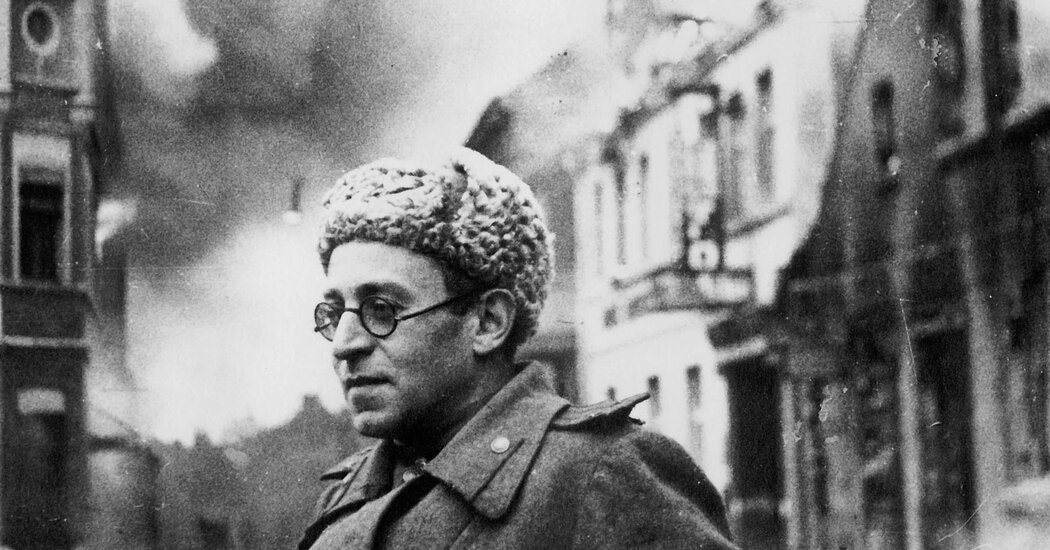NOVEMBER 1942: An Intimate History of the Turning Point of World War II, by Peter Englund. Translated by Peter Graves.
“This is a book about November 1942,” the Swedish economist and historian Peter Englund explains in his introductory note to the reader, “the month that marked the turning point of the Second World War.” November 1942 was the month that brought the Allies hard-fought victories in North Africa and inspired Churchill to say that the war had reached “the end of the beginning.”
Englund’s approach to the subject is more or less the same as it was when, more than a decade ago, he used the diaries and memoirs of people who lived and survived during an earlier conflict to compose his acclaimed account, “The Beauty and the Sorrow: An Intimate History of the First World War.”
“If you are wondering what I’ve added,” Englund writes, somewhat sternly, of his new book, “the answer is: nothing.” Apart from footnotes, then, all information — every detail of every day — is drawn from these records of personal experience. An “intimate history” does “not attempt to describe what the war was during these four critical weeks,” he explains, “but will try to say something about how it was.”
Some of the 39 writers he has selected are well-known figures — Albert Camus; the Soviet journalist Vasily Grossman; the Australian surgeon captured by Japanese forces, Edward “Weary” Dunlop; the English pacifist and nurse Vera Brittain; the British war poet and tank driver Keith Douglas — but most are relatively obscure.
Scattered across the globe, they each endure the anxiety or anguish that the war afflicted in a particular region: a middle-class housewife on Long Island; a Japanese commander on a destroyer off the island of Guadalcanal; a so-called Totenjude (“death Jew”) prisoner at Treblinka; a Korean sex slave in Mandalay; a journalist who suffers through the siege of Stalingrad. Each experience is presented with equal weight, each diary or memoir paraphrased with dispassionate neutrality.
This format ensures an extraordinary — and bewildering — range of striking details. We learn that the bloated bodies of those who died in German U-boat attacks wash up along the coastline of Savannah, Ga.; that at the Treblinka death camp “there is almost always a jam when the door of one of the gas chambers is opened,” as the limbs of the corpses are so densely entangled; that when British soldiers in North Africa take five Italian prisoners, one of them happens to be a tenor from the Milan opera, and all five sing as they help with breakfast; that a Chinese civil servant tasked by the Nationalist government with collecting taxes from the starving population of Henan reports that people are eating bark and grass and selling their children for steamed rolls; that U.S. troops at Guadalcanal, desperate for alcohol of any kind, drink after-shave lotion “filtered through bread”; and that when a private with the Red Army northwest of Stalingrad peers out from his trench one night, he discovers a scene of terrible and staggering beauty — a freezing rain, reflecting the full moon’s light, has formed a shimmering veil over the landscape and the corpses of his dead companions.
In explaining his approach, Englund quotes the American historian Paul Fussell, who warned against “the adventure story model” that tries to make an overarching narrative out of the accidents and flukes of war. Fussell’s classic account of the First World War, “The Great War and Modern Memory,” was another intimate history, but the dark matter that held together the many diary and letter excerpts in that book was Fussell’s own tone of white-hot anger. Englund’s tone, in Peter Graves’s lean translation, is determinedly cool.
Occasionally, Englund intervenes to allow a flicker of careful speculation — “We can assume that the adrenaline flooded through Wakabayashi”; “Are they scared? Are they tired? Are they hungry? We don’t know” — but in general this is a work of remarkable restraint. To read “November 1942” is to watch riveting events through a clear but thick glass window.
Englund has arranged his many excerpts chronologically. Most of them are short, with few running to more than two pages, and the constant change of venue ensures that the reader is kept off-balance. During the week of Nov. 16, in the space of a few paragraphs, he moves from a squash court at the University of Chicago, where a team is at work producing plutonium for a new kind of bomb, to a Japanese prison camp on the island of Java.
Very often it is not at once apparent where in the world we are. “First comes an ordinary dirt road running through an open landscape,” begins one early section. More descriptions of the terrain follow; there are “birch thickets that rustle in the cold wind,” the earth is “boggy.” Only at the end of the second, long paragraph does one learn that we are in East Karelia in Russia, with the Ninth Rifle Company — but of which army? Another page and a half follows and at last it becomes clear that we are following a 19-year-old Finnish soldier.
As one progresses through these fragments of disparate experiences, it becomes possible to recognize and pick up the threads of the individual lives. Of more importance, the reader has come to a point where picking up the threads no longer matters. In short, we have come to the very place Englund was steering us: an acceptance of the impossibility of making sense of the events.
Like the war’s actual participants, the reader never knows what is going to happen next, or how any day’s events add up to any coherent purpose. Englund’s chosen subjects repeatedly express ignorance of what is happening in the wider world and war; not even actual soldiers know where they stand at any given moment, let alone what the next day, or hour, will bring. It is not even apparent — to the reader of Englund’s book, or to most of the war’s memorialists — that November 1942 is the pivotal month of this seemingly endless war; no one, so to speak, has the big picture. The fact that this is indeed an significant moment is blurred by daily fears and preoccupations.
The idiosyncratic features of this history — the rapid and at times perplexing changes of geography, the unsentimental tone, the distance from events — succeed in doing exactly what Englund announced at the outset was his intention. There is no discernible arc to this story. Nonetheless, with a scrupulous and skillful hand he has created an original panorama of humankind’s most destructive war.
NOVEMBER 1942: An Intimate History of the Turning Point of World War II | By Peter Englund | Translated by Peter Graves | Knopf | 467 pp. | $32


